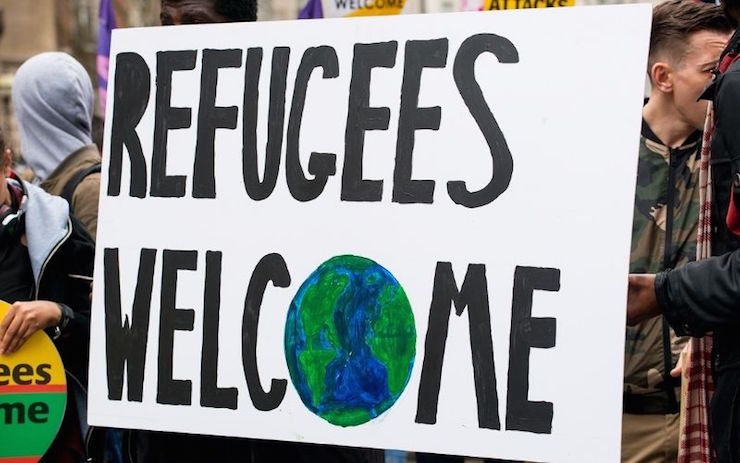Rethinking the migration issue.

“A simple reception and some kind of accommodation” are “very different from a process of integration”. A personal experience.
In about the year 2000, the U.K. government decided that it would send the largest number of its asylum seekers to Glasgow, an area that had never had new arrivals in large numbers except escapees from the Irish Potato Famine of 150 years earlier, and they looked exactly like the Scots. In a short time, there was trouble as the locals were entirely unprepared for the large, multi-racial influx and a young Kurd was regrettably murdered.
I was still working in London when I read about this situation but when I took early retirement a short time later I chose to move to Glasgow as I thought I could perhaps contribute a little in the efforts to make the city more welcoming to asylum seekers.
I found out about and was immediately inspired by a movement called the Integration Networks. (More precisely. Central and West Integration Network is a Scottish Charity which works with individuals and groups to support asylum seekers and refugees, migrant workers and black and minority ethnic people, and works with all communities to promote integration, in the City Centre and West End of Glasgow, across the city of Glasgow and beyond. Learn more).
This was in the days when the U.K. government was already declaring a policy of no integration, no right to work, no teaching of English. The integration Networks were always largely volunteer driven but Glasgow City Council was always supportive and supplied some funding for rental of premises, administration support and needed authorizations protecting from police actions.
The seven areas of the city with the largest concentrations of asylum seekers were each separate Integration Networks but they all met up regularly to exchange ideas that were working well.
I became involved with the Integration Network in Govan, a former shipbuilding area now with high unemployment and deprivation.
I found what the network was doing was inspirational and very open to adaptation and improvement. There were English Language classes set up but also classes where the locals could learn about the culture of the incomers. African dancing and drumming were particularly popular!
Eastern Europeans were included in language classes and there were excellent large-scale parties to observe, for example, the Polish National Day with traditional social games. There was a weekly Open Day with art and craft activities and a Help Desk at which anyone could find out how to get more specialist advice about all sorts of problems. Each week, until Health and Safety Regulations banned the activity, there was a meal cooked by one of the national groups, for example the Nigerians. The food was always a great talking point and the cooks enjoyed the praise!
I have written about the Integration Networks in the past tense for 2 reasons: my involvement came to an end when I had so much responsibility for the setting up and the running of the night shelter. I found I could not do both properly. I can quote, however one of the asylum seeking ladies who said to me, “I used to sit alone in my room and stare at the wall and weep. Now, because of the Integration Network, I have friends and I smile all the time!”
The second reason is that the activities of the networks have had to change greatly because of Coronavirus. However, this is also a great opportunity to face a question: as the Cardinal says in his speech to Milan city, “a simple reception and some kind of accommodation” are “very different from a process of integration”. Now, how should we change our “simple reception” coming from charity or the good heart of a human being, how should every “kind of accommodation” provided by Government under international law change in order to become a real “a process of ‘integration”.
At that time, “there was trouble as the locals were entirely unprepared for the large, multi-racial influx and a young Kurd was regrettably murdered”. Are today the people of host countries prepared for the coming of even more huge flooding of immigrants of so many different cultures and languages?
Should not the governments, from where the migrants come, be involved and be made responsible? For instance, these governments are entitled to receive the economic support according to many international agreements. Why not use part of them, “To elaborate a multiracial integration path that considers the real integrability” of the different ethnic groups from both sides, the coming in people and those who welcome them, as Cardinal Martini suggested?
It can look just a provocative idea, but while “Hell is paved by good intentions” the lack of action perpetuates injustice from both sides.
Margaret Henderson,
Glasgow – Scotland



